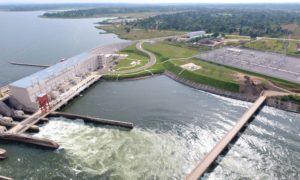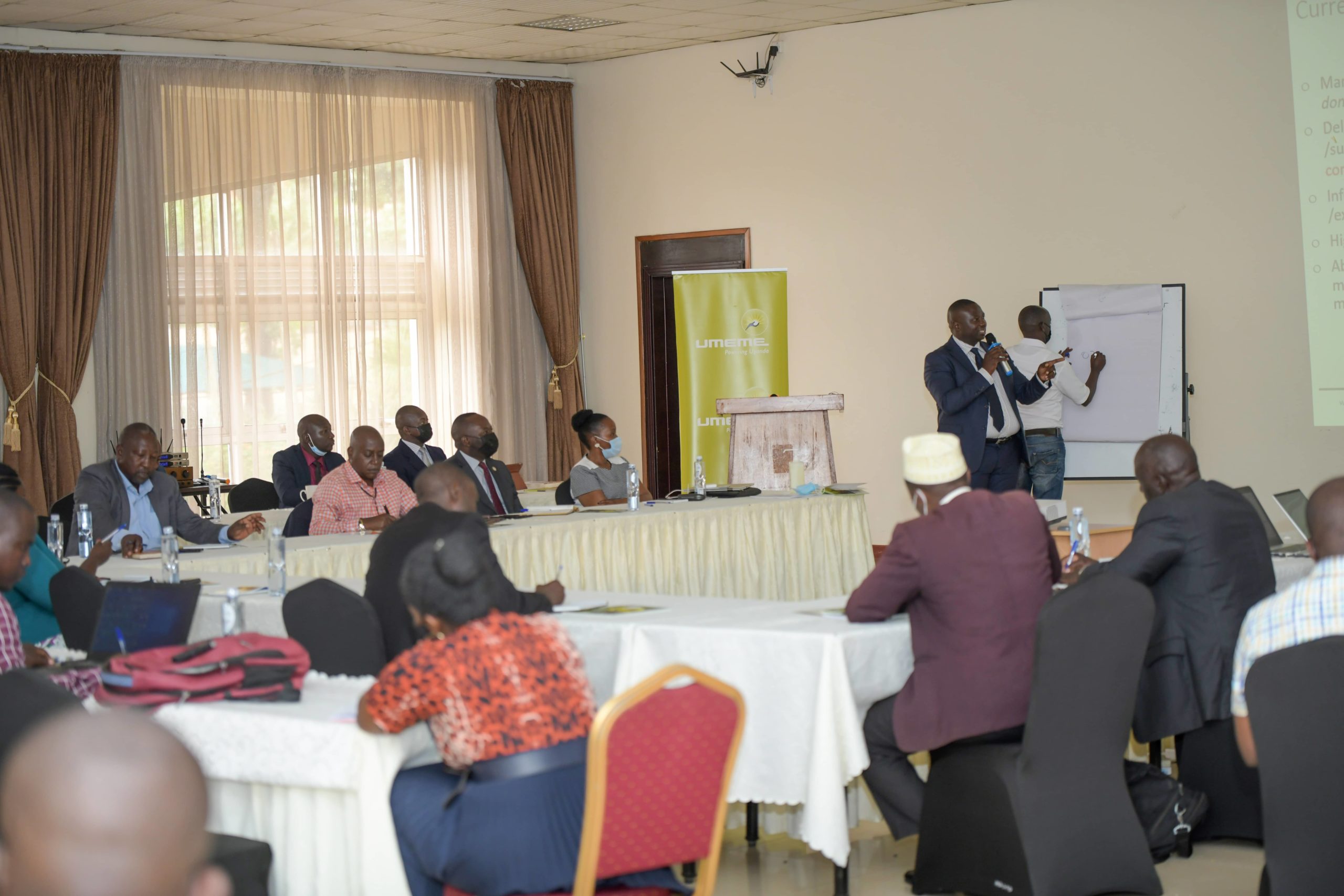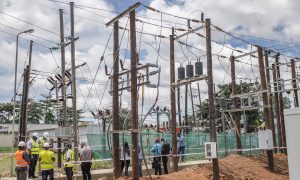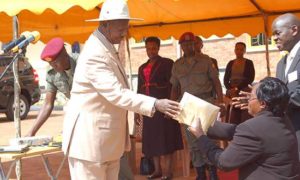
By Alex Baluku and Innocent Kiiza
Rwenzori sub-region in western Uganda is celebrating a game-changer development that contributes to development, environmental conservation, and improving living standards.
The area was one of Uganda’s energy-starved and clean energy deficient parts until 2015 when the 9.2MW Nyamwamba Hydroelectric power station was constructed, also referred to as Nyamwamba Power Station. Construction ended in 2018.
The power station is situated in Namuhuga Village, Kilembe Sub County, on the catchment of River Nyamwamba in the Kasese District.
The project is being constructed by South Asia Energy Management Systems LLC (“SAEMS”), a renewable energy company.
Leonard Omollo, this company’s human resource and administration manager, says the project was constructed with a loan from a consortium of funders, including the Emerging African Infrastructure Fund, the Netherlands Development Finance Company, the German Investment Corporation, and the FinnFund.
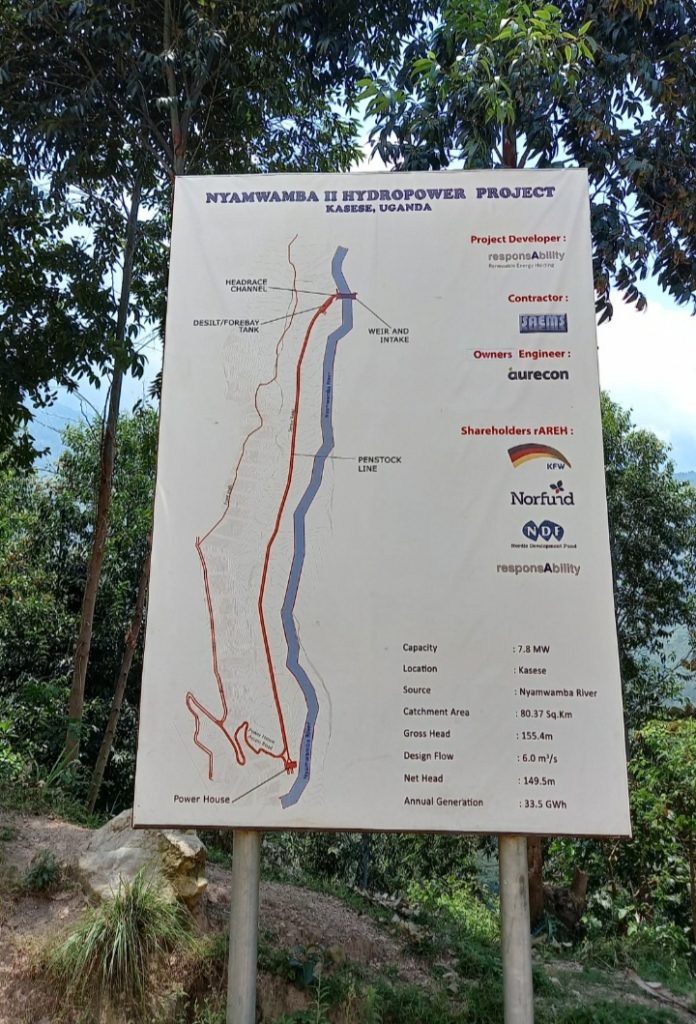
The dam is phase one of the project, also known as Nyamwamba Hydropower Phase one, and serves power to the Kasese town community via 33kv cables. The second phase of this project is expected.
Nyamwamba Hydropower Phase one cost an estimated US$ 24 million. Part of this, totaling US$12 million, came from the Netherlands Development Finance Company; US$6 Million from the Emerging Africa Infrastructure Fund; US$4 Million from the German Investment Corporation; and US$2 Million from Finn Fund.
<div class=”flourish-embed flourish-chart” data-src=”visualisation/10817587″><script src=”https://public.flourish.studio/resources/embed.js“></script></div>
According to Omollo, the power generated from the first phase of this project serves the Kasese town and Kasese district community. From the dam, power is transmitted to Nkenda Substation in Bugoye Sub County in Busongora County North – approximately 13 kilometers away, where it is integrated into the National electricity grid.
“Once the second phase is completed and switched on, it will produce 7.8MW of renewable energy, enough to supply 34,000 households in one of Africa’s most energy-starved regions,” stresses Omollo.
He notes that the power plant will also help to reduce Uganda’s annual carbon emissions by 18,000 tons and support access to energy for 160,000 people.
Uganda’s greenhouse gas (GHG) emissions for 2019 was 43,290 kt of CO2.
Game-changing development
Norah Mubazi, a Kasese Municipality resident who supplies the dam construction workers with food and tea, sees the hydropower project as a savior.

“I have a steady market for my food,” she narrates, stressing that her restaurant now makes “double the money it was generating before the beginning of the dam construction exercise.”
The power project has also contributed to the revamping of the main roads damaged by floods in Kilembe and some other feeder roads around the dam. The visibly improved roads connect communities in the sub-county of Kilembe and Bulembia Division.
According to Omollo, the South Asia Energy Management Systems LLC (“SAEMS”) has also donated beds to Kilembe mines hospital as part of their corporate social responsibility.
Omollo adds that a steady hydroelectric power supply to households will save trees cut for firewood and charcoal.
He now urges the government to make hydroelectric power affordable to every household in the area, saying this would reduce the rate at which trees are cut and subsequently mitigate the effects of climate change.
Dams are a source of renewable electricity while simultaneously contentious due to their effects on the environment and communities where they are constructed if not managed well.
A boost to business and lives
Yoweri Kithi Bwambale, the chairperson for Bugoye Trading Center in Busongora County North in the Kasese district, narrates that soon after getting connected to electricity, several local people in his area purchased television sets, electric flat irons, and some household electrical appliances.
He also notes that “schools can now use computers and access the internet.”
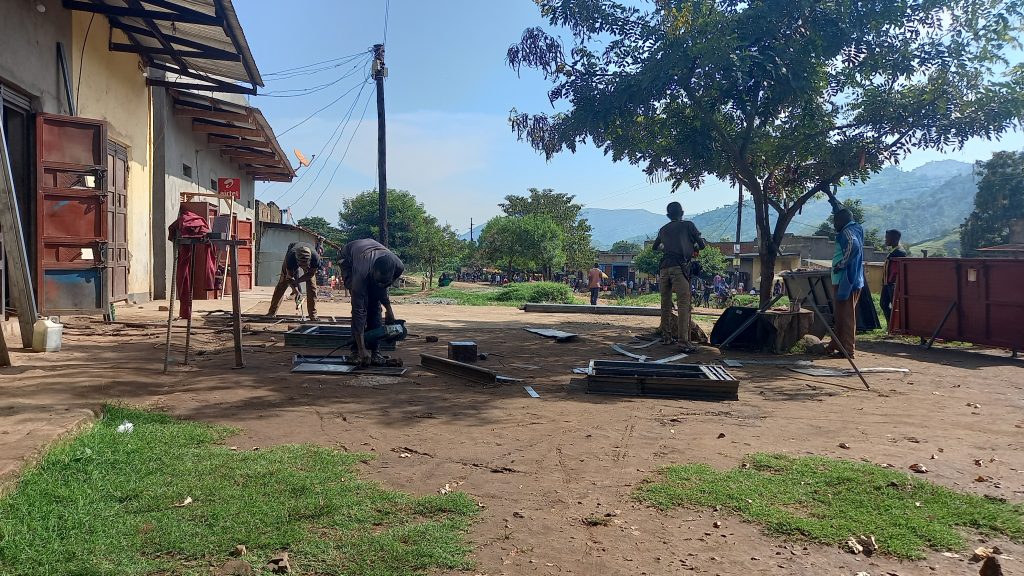
Bwambale stresses that the demand for electricity in rural areas has increased in the past years with the mushrooming of vocational schools that produce graduates eager to start their businesses such as welding tailing, carpentry, and motor vehicle repairing, among other crafts, all of which require electricity.
He also notes that some farmers’ groups have set up coffee hullers and maize mills that add value to their produce, stressing that this has changed many people’s lives.
“Some female youths have set up hair and beauty salons while bar owners and shopkeepers have acquired refrigerators enabling them to sell cold drinks, unlike in the past,” narrates Bwambale.
At Bugoye Health Center IV, the Health information officer Kamusede Masereka says they can now use equipment such as X-rays machines, scanner machines, and other electrical diagnostic appliances.
He insists that this enables the health center to offer improved health services to the community.
Masereka is now optimistic that the Health facility will be upgraded to hospital status.
INSERT AUDIO/SOUNDCLOUD ENGLISH //////////////////////
Richard Bomera, the Bulembia division chairperson, says rural electrification has contributed to reducing youth migration from rural to urban areas.
“Shack video halls, discotheques, and opportunities for self-employment have been brought closer to people by this dam,” narrates Bomera, further stressing that youths no longer need to migrate to urban areas for such facilities and services.
Asanairi Bukanywa, the Kasese municipality agricultural officer, says some farmers can now refrigerate their produce before or while in the market, enabling them to stay fresh longer compared to the past when the area had no power.
Some farmers can now pump underground water using hydroelectric-powered pumps for their farms.
Community concerns still loom
In Bulembia Division, locals there accuse the Nyamwamba Hydropower II project of not fulfilling its pledges.
Wilson Bwambale, a resident of Masule B in the Bulembia Division, says that the company that constructed the dam promised to build a local market for the people in the area. Still, up to now, nothing has been done.
The locals in the area also want the government to always hold meetings with the project-affected communities first to agree on the terms and conditions to compensate people whose crops and houses are destroyed due to the construction of such projects.
This story was supported by InfoNile with funding from JRS Biodiversity Foundation.



